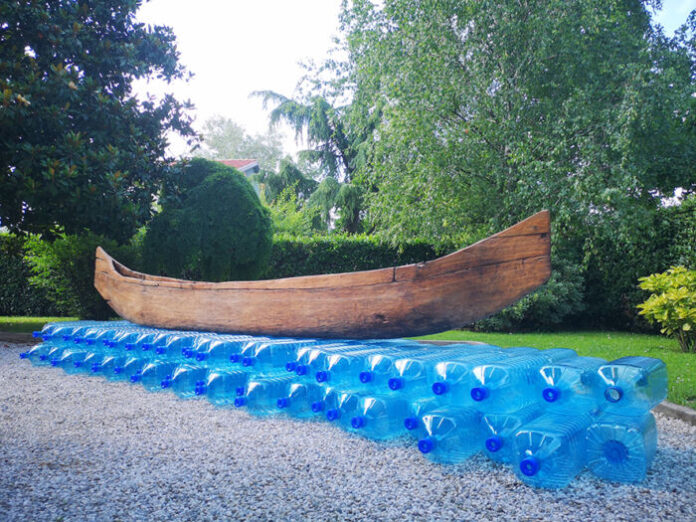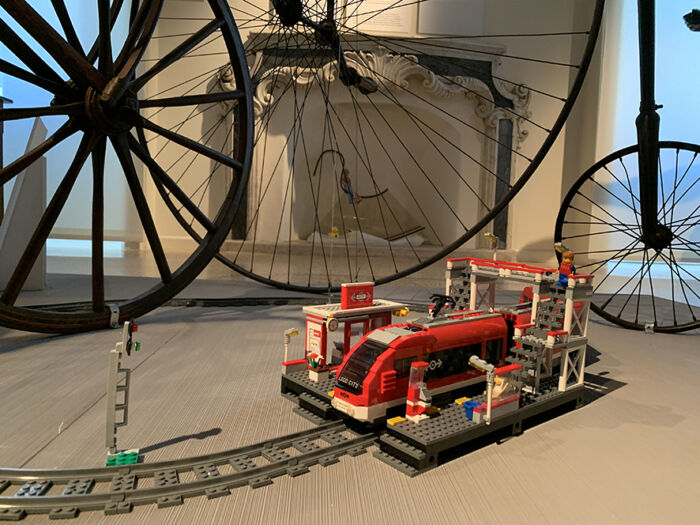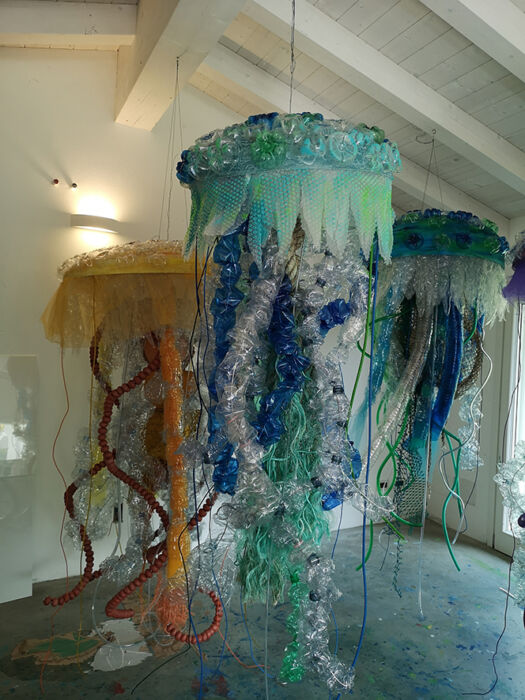
On the occasion of the reopening to the public of the Ethnographic Museum of Friuli, from Friday 7th May to 6th June, two exhibitions will enrich the offer of this important cultural institution of the Municipality of Udine: “Plastica d’autore. L’ingresso del Design negli oggetti di vita quotidiana” (Designer’s plastic. The entry of design into everyday objects), curated by the Anthropoi XXI A.P.S. association, and “Plastic-ocene. L’antropizzazione del mare” (Plastic-ocene. The anthropisation of the sea)., curated by Elisabetta Milan.
“Designer’s plastic. The entry of design into everyday objects”
The exhibition is part of the permanent museum itinerary in a contaminating dialogue between the objects of yesterday, displayed in the Museum, and those produced in the last 70 years with this material.
Until not so many years ago, artefacts were precious because they were rare, and therefore reserved for the few. For everyone else, the world revolved around ‘home-made’, when recycling was the norm and durability the greatest of virtues. Then mass-produced instruments came, accessible to a larger number of consumers thanks also to the use of the most versatile and economical material of all time: plastic.
Mouldable, coloured, transparent, inflatable, resistant: these are just some of the characteristics of plastic that have enabled designers and manufacturers to transform objects that were once devoid of any consciousness of their own into real toys for adults in which the aesthetic value has been of primary importance.
These and many others are the contents of the temporary exhibition, which intersects with that of the museum in different areas: cooking, lighting, weather, toys, seating and clothing, where objects of international renown are displayed alongside locally produced products.

“Plastic-ocene. The anthropisation of the sea”
What will be the future of polymers? Today, plastic is everywhere: in houses, cars, clothes, even in toothpaste. We produce too much plastic, especially for single-use items, and if it is abandoned, it pollutes the environment. It is therefore necessary to recognise which plastics must survive and which must, for a better future, disappear from our daily experience.
The contemporary art exhibition curated by Elisabetta Milan, a third-generation artist and WWF AMP Miramare snorkelling guide, moves along these lines.
The aim is to make visitors reflect on the negative impact of plastic on the environment and, above all, on the sea thanks to some large scenographic installations – made of single-use plastics and plastic materials collected on our beaches – and to the information panels created with the scientific contribution of WWF AMP di Miramare.

Two years ago Elisabetta Milan began her journey into the polymeric world with Plastic-ocene, the work that inspired the title of this exhibition. It is an installation made up of blue skeins of polypropylene threads representing an angry sea, in which marine organisms such as shells and plastic beached and abandoned in the sea coexist; in the centre is the symbol: the cinerary urn with a credit card weighing 5 g, corresponding to the amount of plastic ingested weekly by a human being.
Also impressive are the Alien Jellyfish, a group of 4 marine organisms that explain the physical bulk of plastic: they are made from a number of bottles corresponding to the monthly consumption of a family of 4, 3, 2, or 1 person. Then there is The Canoe, an ancient wooden artefact resting on a plastic sea made up of 100 water bottles, a work that speaks of the world of macroplastics, and finally the Nautilus, a clay casting with traces of plastics imprinted on it, which have a very short life, but at the same time represent a symbol of rebirth and positivity.




































